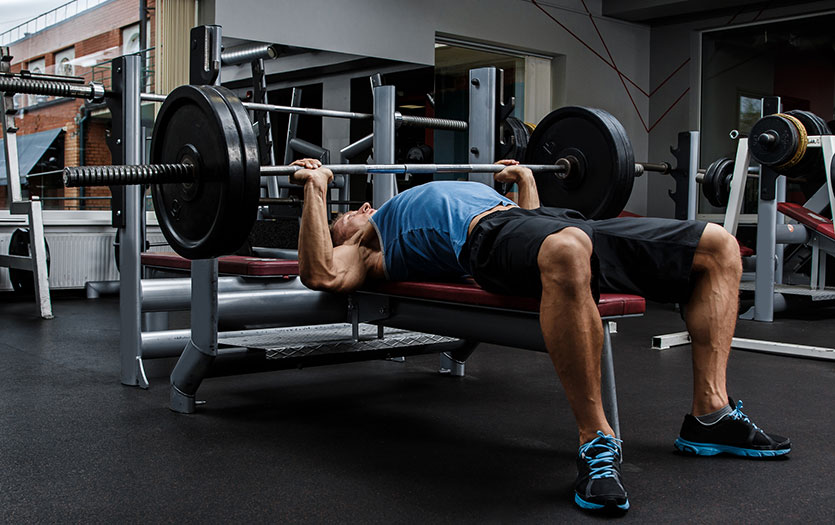
This post was written by Linying Xiao, ATC, certified athletic trainer, Parkview Sports Medicine.
Slowly but surely, people are catching on to the vast benefits of lifting weights, at every age and stage of life. Adding regular resistance training to your fitness routine is good for your muscles, your bones, your waistline, and can aid in managing diseases, such as hypertension and diabetes. The challenge, for those just getting started in the weight room, is knowing where and how to begin. Let’s talk about some helpful resources and the biggest mistakes you should avoid.
Form comes first
The weight room at a gym can be an intimidating space for beginners. It’s tempting to just watch someone else lifting weights, and mimic what they’re doing. But there’s no guarantee that they are doing the movements correctly, and using improper form can lead to injury and a lack of results.
This is why it is critical that you take the time to seek out the right resources and make sure your lifting form is safe. While there are many pitfalls you want to avoid, here are some of the biggest considerations for resistance training:
- Watch your back. You want to keep your shoulders pulled back and maintain a straight back throughout the motion, bending at the hip when appropriate. Engage your core for support. You can read more about back pain during weight training here.
- Go easy on your joints. One of the kindest things you can do for your joints is to stretch before and after your weightlifting session. Make sure you warm up prior to activity and do a cooldown after. It can also help to incorporate a few reps in the beginning of each set at a lower, less challenging weight.
- Increase weight gradually. It’s important to listen to your body here. Don’t show up to your first lifting session and grab the heaviest weight you can get off the rack and do reps to failure. Ease into a more challenging set of reps by beginning first with a weight you can move easily through the exercise for 12 to 15 reps. For the next set, increase the weight slightly, and then again for the final set. As you get stronger, you can continue to gradually increase the weight. This is known as progressive overload.
- Breathe through each exercise. It’s common for people to hold their breath while lifting something heavy. But this tenses your muscles, making them more prone to strain. Instead, try to focus on exhaling during exertion and inhaling as you move to put the weight down. And don’t forget to rest between sets.
- Include exercises that work all muscles equally. When you favor a particular exercise, side of the body or area of the body, it can lead to muscle imbalance, which leads to injuries and an uneven physique. Overtraining your quads, for example, can contribute to weak hamstrings, and strong biceps can mean weak triceps. Your workout routine should include exercises that work all muscles, taking care to strengthen opposing muscles equally.
Finding the right resources
Lifting weights has numerous benefits, but it also comes with a fair share of risks when not done properly. This is why it’s so important to ask for help when you need it. Especially in the early stages of your weightlifting regimen. Here are just a few suggestions for getting guidance for your resistance workouts:
Find an expert. If you belong to a gym or fitness establishment, there are likely trained professionals on staff who can assist you for free or a reasonable additional fee. If you don’t belong to a gym, but want to learn how to lift weights properly, consider investing in a trainer or gym membership.
Go online. The internet is full of advice, some good and some not so good. Use your discretion when deciding which guidance to follow. YouTube is a wonderful resource for videos that walk you through form and variations to exercises for specific muscle groups. Listen for clues that the person in the video is using evidence-based information from reputable sources or properly explaining the movement and how their approach protects your back, neck and joints. Look at the comments and see what others are saying, and remember, it never hurts to get a second opinion. The same is true for blogs and websites.
Books. A quick search online or visit to the library will reveal the wealth of literature available on muscle building and weight training. Again, take some time to look at the reviews and see what others think of the advice the author provides before purchasing.
Online coaching. Depending on your budget and routine, there are some reputable online coaching services. Do some research and see what others are saying about their experiences first. Many will allow you to have a consultation before committing to paying for a plan or virtual sessions.
Go slow, listen to your body and don’t be intimidated by the weight room. You belong and have the right to get stronger. Your bones, muscles and mind will thank you for investing the time and energy!
More about muscles
If you found this article helpful, we think you’ll enjoy these posts from the Parkview Dashboard:
Four strategies to ease sore muscles
Focus on these four things to avoid losing muscle
Is a percussive therapy device the muscle recovery tool for you?
Circuits, supersets and intervals for beginners
Does weight training make you bulky?



